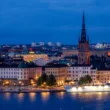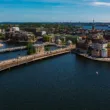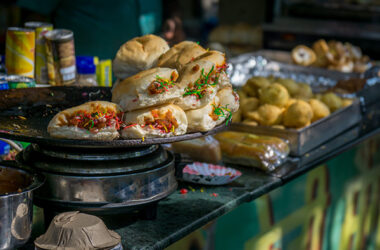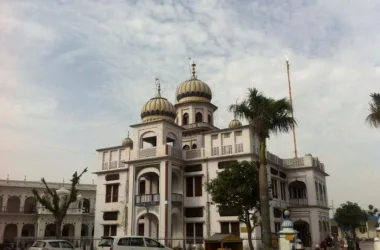In the mid-nineteenth century, Dalhousie was the second string of hill stations that the British built in the region. Its location, at the western edge of the Dhauladhar mountains – which are a sub-system of the Himalayas – gave it a commanding position overlooking the plains of Punjab. As the town grew, expectedly, it became a popular summer retreat for many families of Punjab who preferred its easy lifestyle and relaxed ambiance to the snooty social divides of Shimla. Officials and business families from Lahore, Europeans, and a few Indians, would travel up for the summer months – and a couple of Dalhousie’s families go back to the town’s early days. Dalhousie – places to visit.
With its ‘ old world charm ‘ and lingering echoes of the Raj, the town covers an area of about seventeen square kilometers. Today’s Dalhousie is still a quiet town and holds immense natural beauty where the thick woods are framed by magnificent snow peaks. There is colonial architecture a variety of sightseeing and some excellent walks. The town swings around the hills somewhat like an adventurous figure of eight; it also lets fly a few limbs high and low.
Tall stone revetments made rather venerable by a variety of mosses, protect the roads. Just above them are shrubs and ferns and wildflowers. Then come the trees – oaks, cedars, and the flowering rhododendrons. Below, the valley plunges, in fits and starts – with both sharp drops and level patches of fields and houses. At the end of that long plunge, flows the river, Ravi. And whenever the road takes a turn facing north, the spectacular mountain ranges swing right back for an unforgettable view.
1. St. John’s Church and St. Francis’ Church
The oldest record book of St. John’s Church dates back to 1863 though the church was not finished till 1882. This is the oldest church in Dalhousie and replaced an old wooden one. St. John’s is located at Gandhi Chowk.
High stone revetments and a narrow path do not reveal much of St. Francis’ church, the Catholic Church, from the road below. It is only when you reach the top, that the structure and the flattened hilltop are revealed. The church, which lies just above Subash Chowk dates back to 1894 and was built by contributions. The dressed-stone, dark woodwork, and stained glass windows are finely done.

2. St Oswald’s Church and St. Andrew’s Church
St. Oswald’s Church is in the cantonment of Bakloh. The troops were Gurkhas, but the ten officers were British Christians. A cemetery was also established in 1872. The Chaplain of Dalhousie was directed to visit Bakloh on a Sunday once in six weeks and later, six times a year. The Archdeacon regularly visited Bakloh when he came to Dalhousie from Calcutta or Lahore, and a Military Church was built in 1893. The other cantonment in Dalhousie’s Wings is the one at Balun; this has St. Andrew’s Church built by the Presbyterians who obtained a good site on the main road. The Centenary Service of St. Andrew’s Church was held on 30 November 2003.

3. Panchpula
Connected by a narrow but good road, Panchpula is about 3 km from Dalhousie’s General Post Office. At Panchpula, is the clear stream that gushes down from the heights of Dainkund (Dhyankund). This stream still provides a primary source of the town’s water (this also was the base of the supply for the Balun Cantonment) and was a part of the original master plan when Dalhousie was being settled. By the roadside, a memorial in the form of an elegant obelisk, surrounded by water pools fed by the stream, has been built at Panchpula in memory of the freedom fighter, Sardar Ajit Singh. En route, to the memorial, the waters of the Satdhara springs are believed to have therapeutic properties.


4. Tibetan Handicrafts Centre
This is a handicraft center run by Tibetan refugees and is a couple of kilometers after Gandhi Chowk, en route to Khajjiar. Carpet weaving is the main industry. Tibetan carpets, apart from their distinct motifs that include the lotus the conch, and even yaks, are heavy and chunky. The woolen yarn is also thick and the colors are strong. The pile is normally half an inch thick. The knots per square inch vary between 30 and 80, with around 50 as the normal. The Tibetan handicraft shop at Gandhi Chowk has some of these on display and sale. At the Handicraft Centre, you can also place an order; a catalog with designs and prices is available.
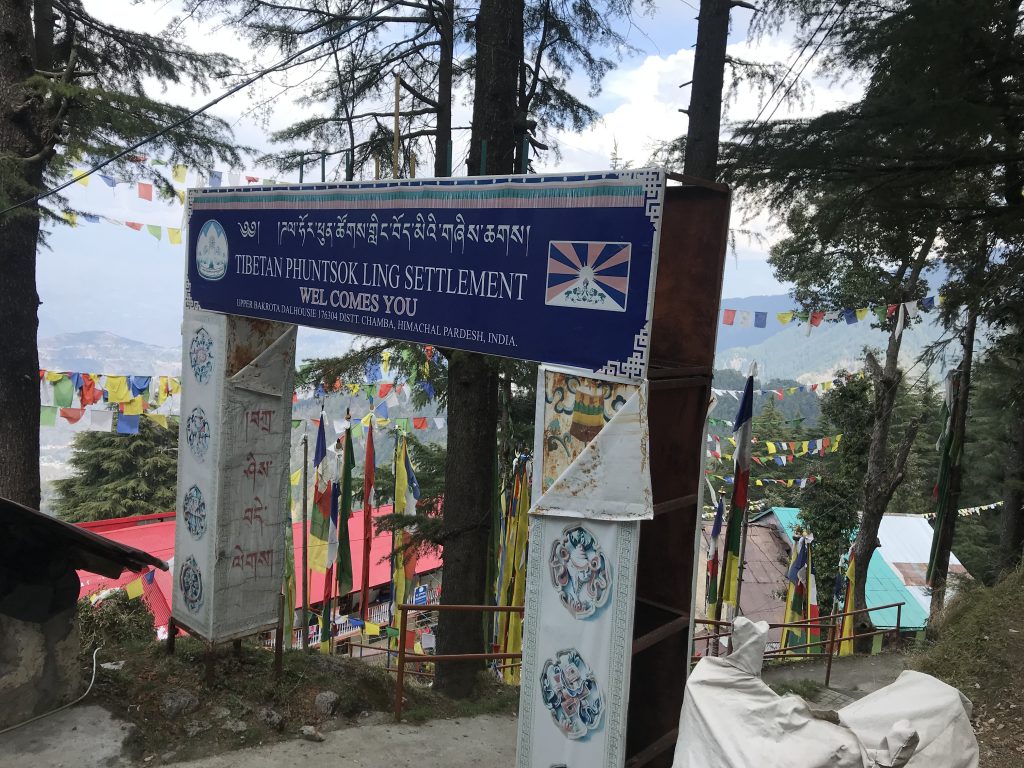

5. Bakrota (Bakhrote) Hills Walk and the Dainkund trail
This is a delightful walk of around 5 kilometers (3 miles) that encircles Lower Bakrota and can extend longer to the hill of Dainkund (Dhyankund). From the top of Dainkund, on a clear day, you can even see the three main rivers of the area the Ravi, the Beas, and the Chenab as they flow in the distance. En route there are colonial houses, small attractive spots where you can stop for a breather or a snack, and all the while, there are excellent views of the snow ranges, woods, and valleys. One of the spots en route is the Subash Baoli, where noted freedom fighter and creator of the Indian National Army (INA), Netaji Subash Chandra Bose walked and contemplated


6. Kalatop
Kalatop is a wildlife sanctuary that rises past Dalhousie and then goes down towards Khajjiar and Chamba. This covers an area of around twenty square kilometers and within its confines, are a dozen little villages. These pockets of habitation share space with animals and birds like the Serow, Goral, Yellow Throated Marten, Leopard, Black Bear, Barking Deer, Flying Squirrels, Monal, Koklas,s, and Chukar. Altitudes within the sanctuary vary between approximately 1200 meters (3937 feet) and 2800 meters (9100 feet). Temperatures can drop to -10 degrees Celsius in the heights in winter and can touch 35 degrees Celsius in the lower sections in summer. The sanctuary is crisscrossed by several brooks and streams that pour their wash into the river Ravi.
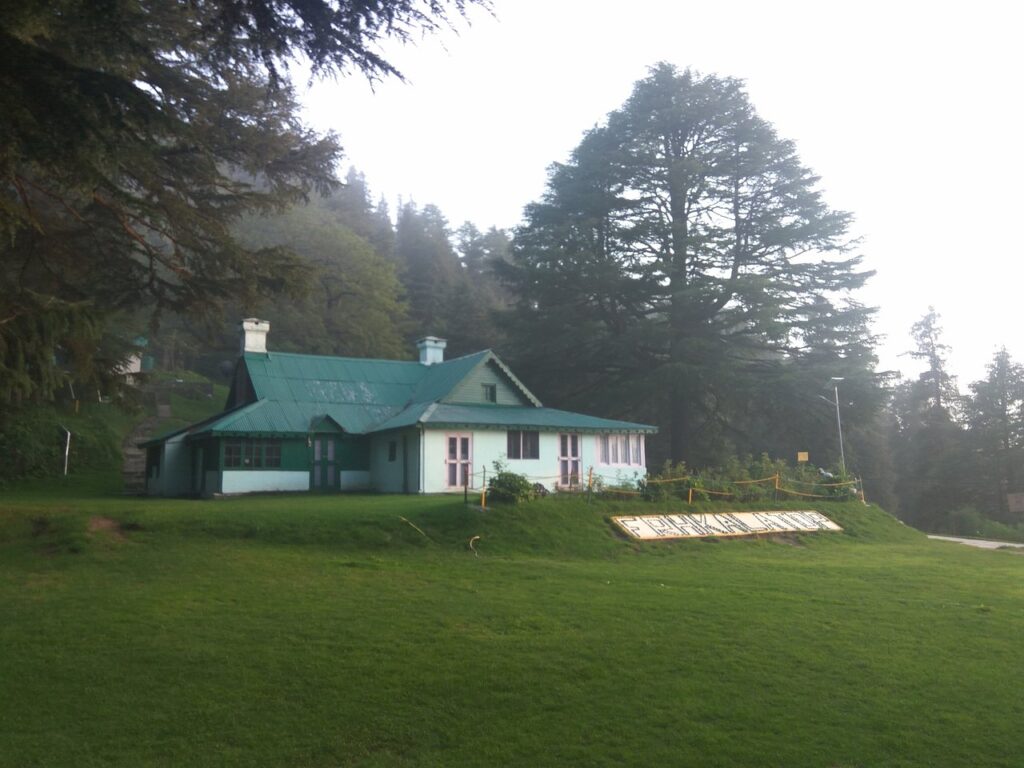

Related Post – CHAIL
Frequently Asked Questions About Things To Do In Dalhousie
Q. Is there snowfall in Dalhousie?
A. There is snowfall in Dalhousie during the winter season from December to February when the average temperature here remains between 4 and 11 degrees Celsius.
Q. What is the most famous things to do in Dalhousie?
A. However, the most famous thing to do in Dalhousie is to go trekking in the surrounding mountains which will provide you with opportunities to experience misty peaks and scenic views. You should also consider visiting places like Satdhara Falls, Dainkund Peak, and Tibetan Handicrafts Market.
Q. Does Khajjiar have snow?
A. Yes, because of being a hill station, Khajjiar gets snow just like any other hill station in the country. You can visit between October and March to experience snowfall here.
Q. Why is Dalhousie famous?
A. Named after Lord Dalhousie, the hill station of Dalhousie is famous for being home to the pristine and serene Dhauladhar Mountain Range. It is also famous for its Victorian architecture, colonial charm, picturesque landscapes, and adventurous activities.
Q. How far is Dharamshala from Dalhousie?
A. The distance between Dharamshala and Dalhousie is 121 km. If you are traveling to Dalhousie from Dharamshala, it is best that you book a cab. The nearest railway station is the Pathankot railway station which is approximately 42 km away from Dalhousie.
Q. Which month is best for Dalhousie?
A. If you are planning to visit Dalhousie, you should plan your trip during the months between March and May or October and February.





